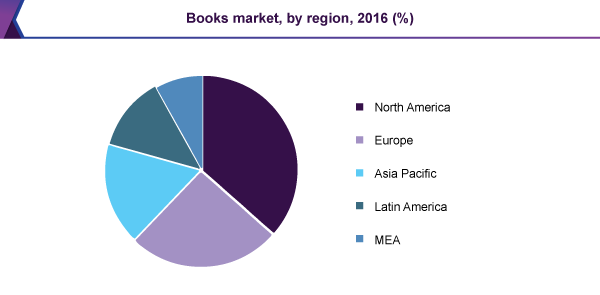Books Market in Asia Pacific Thrives with Educational Expansion
The global books market continues to evolve, supported by technological advancements, educational demand, and the enduring appeal of fiction and print media.
The global books market size was estimated at USD 150.99 billion in 2024 and is projected to reach USD 192.12 billion by 2030, growing at a CAGR of 4.2% from 2025 to 2030. Rising consumer spending on books—fueled by increasing disposable incomes, growing interest in reading, and innovations in book formats—continues to drive market expansion.
The market remains largely dominated by academic publishers, while non-academic or trade publishing accounts for a smaller share. Academic publishing benefits from its close association with the global education ecosystem, catering primarily to schools, universities, research institutes, and professional education sectors.

Technological advancements have further transformed the reading experience. The introduction of audio and video-integrated e-books has attracted diverse audiences across regions, while improved accessibility of paperback formats for differently-abled and non-English-speaking readers continues to support inclusive market growth.
Key Market Trends & Insights
- North America accounted for over 33.0% of the global market revenue in 2024.
- The U.S. books market is expected to grow at a CAGR of 4.2% from 2025 to 2030.
- By type, the educational segment held an 18.29% share in 2024.
- By category, the fictional books segment dominated with a 59.99% share in 2024.
- By format, the hard copy segment accounted for 84.12% of total revenue in 2024.
Download a free sample PDF of the Books Market Intelligence Study by Grand View Research.
Market Size & Forecast
- 2024 Market Size: USD 150.99 Billion
- 2030 Projected Market Size: USD 192.12 Billion
- CAGR (2025–2030): 4.2%
- Largest Market (2024): North America
Competitive Landscape
The global books market is fragmented, featuring a blend of large multinational publishers and smaller independent players that contribute to the sector’s creative diversity. Major players such as Penguin Random House, Hachette Book Group, HarperCollins, Simon & Schuster, Macmillan, and Pearson dominate the landscape with their broad product portfolios and global distribution networks.
These companies continue to strengthen their market presence through digital transformation, mergers and acquisitions, and strategic partnerships. For instance, Penguin Random House’s acquisition of Simon & Schuster significantly enhanced its presence in the North American market.
Recent Developments
- 2024: Penguin Random House launched new mystery and thriller titles in both e-book and hardcopy formats.
- November 2020: Pearson established a direct-to-consumer division, aiming to build stronger connections with learners worldwide.
- November 2020: Scholastic Inc. announced a multi-book publishing program with civil rights icon Ruby Bridges.
- November 2020: HarperCollins signed a two-book deal with filmmaker Quentin Tarantino, whose debut novel “Once Upon a Time in Hollywood” was released in Summer 2021.
Key Companies Profiled
- Penguin Random House
- Hachette Book Group
- HarperCollins Publishers
- Simon & Schuster, Inc.
- Pearson
- Macmillan Publishers
- Scholastic Inc.
- Marvel Comics
- Morris Publishing
- IDW Publishing
Explore Horizon Databook – the world’s most comprehensive market intelligence platform by Grand View Research.
Conclusion
The global books market continues to evolve, supported by technological advancements, educational demand, and the enduring appeal of fiction and print media. As publishers adapt to digital ecosystems and explore innovative content formats, the industry is poised for steady growth through 2030.